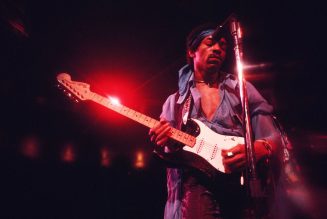Technology
Music streaming dividend: Online platforms feed a growing speakers boom
Monday January 30 2023
Streaming has changed how we experience music. FILE PHOTO | SHUTTERSTOCK
About nine years ago, Vincent Wafula bought a high-power home theatre system, a limited Samsung HT-DS 1000 edition, which comes with tallboy speakers and a pedestal-mounted receiver-DVD-audio/video player.
He says he bought it for about Sh150,000. He would use it, blasting music when CDs were in vogue, but then technology changed.
Music streaming services came into the market, meaning that he now only clicks his phone, and Spotify, Deezer or Apple Music plays his favourite music.
Now the home-theatre system stands in his living room, unused and he contemplates selling it, but at what price and to whom? He also lost most of his CDs and the CD player has not been used for years now.
Music streaming services such as Spotify, Deezer or Apple Music, Boomplay, and Mdundo have spelt the death of home theatre and radio systems that played audio and video using DVDs and cassettes.
But they have heralded a boom in speaker sales. Kenyan consumers now prefer portable speakers that can be connected to smartphones and play music.
GenZ unique tastes
For many years, the business of home theatre systems was booming. In the 90s, the crowded shops in Nairobi’s Luthuli Avenue were full of different types but now more are stocking televisions, refrigerators, subwoofers, and portable speakers.
Technology changes fast, meaning that consumers have to keep up with newer products.
There is also a generation of consumers that do not cling to products and have no nostalgia for classic tech products so they buy and discard as technology changes.
Also read: Investors brace for streaming war as rivals take on Netflix
A majority of the users of music streaming services are Generation Z, looking for variety. Spotify, the Swedish live-streaming app, for instance, attributes its wide coverage to its ability to give its subscribers access to millions of songs and other entertaining content with an excellent discovery algorithm.
Spotify currently holds 70 million songs in its library, with 60,000 added every day; it also holds 2.9 million podcasts in its library.
As Spotify celebrates its second year of operations in Kenya next month, the app is already seeing Kenyan music lovers discovering more music, local artistes finding a megaphone for their work, and Kenyan genres getting exported across the globe.
“Streaming has changed how we experience music. You don’t spend money accumulating stacks of CDs or cassettes, you can’t lose your music, and you won’t miss out on any music because of where you live.
When power shifts and the world changes, you can’t necessarily do things the way you’ve always done them,” Phiona Okumu, the Spotify head of music in sub-Saharan Africa recently wrote in a Business Daily article.
Mike Okello, a 30-year-old is one of the thousands of Kenya’s Spotify subscribers. He cannot remember the last time he saw the traditional radio system.
“If I am not on Spotify, then I will be on television, probably watching a very important news item. Spotify has all that you need. I can either choose the free live stream when I am broke and scale up when I receive some coins in my pocket,” he says.
The breakdown of music streaming users is interesting. Women, for instance, make up just over half of Spotify users; however, it is also popular among men.
The biggest age demographic that uses Spotify is called Generation Zs (Gen Zs); between the ages of 25 and 34, followed by those of age 18 and 24 years.
Local consumption
Research shows that the third-largest demographic is those aged over 55, showing that Spotify can appeal to an older crowd as well.
According to the platform, there were over 1.2 million user-generated playlists, a 25 percent increase in the number of Kenyan artists, and 8,730 songs were added by creators in 2022.
Similarly, there was a 184 percent year-on-year increase in consumption of local music from 2022, an encouraging figure that shows that Kenyans do stream local music.
Boom in speaker sales
As consumers shift to music streaming services, sellers of speakers are enjoying a good year.
John Kobia, an electronics salesperson in Nairobi says the speakers business has been thriving. He sells more than 10 speakers in a day with the majority of his customers being the youth.
“Our clients comprise purely the young generation, especially those from colleges and universities. The most bought brand is Sayona, which costs Sh11,000. We also have a cheaper brand, Nunix which costs as low as Sh4,500,” says Mr Kobia.
“Smart speakers like the Amazon Echo have sparked a new opportunity for audio-only entertainment in the home and are shaping consumer practices and preferences. Smart speakers access Wi-Fi networks and don’t have an AM/FM antenna,” he adds.
Also read: New content rules target streaming firms, creators
Drastic change
The situation is the same with Joyce Rege, a sales representative at an electric shop in Nairobi’s Central Business District.
“My boss had to make a very first decision when we realised the radios were no longer selling. I would stay with over half of the previous stock for months just accumulating dust. I cannot tell why there was a drastic change but one thing for sure is the change in consumer preference. Most of the young generations don’t even have time to listen to what is happening across the country. As long as their playlist is up to date, they are good to go,” she says.
She adds that most of the buyers are young men.
“The best-selling speakers are the Nunix since they are still new in the market. We also have Von which is quite expensive, costing up to Sh27,000. Surprisingly we still have customers opting for them,” says Ms Rege.
Carmakers are also following the trend. Manufacturers are changing cars to be digitally compatible so that they do not require playing music using CDs.
Many models now come with built-in Bluetooth technology and other easy ways to integrate hand-held mobile devices, enabling drivers to listen to digital services.
These advances are turning the car into an interactive, digital, mobile media device.
→ [email protected]









